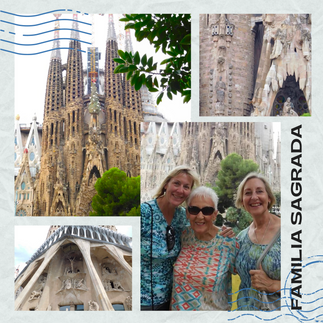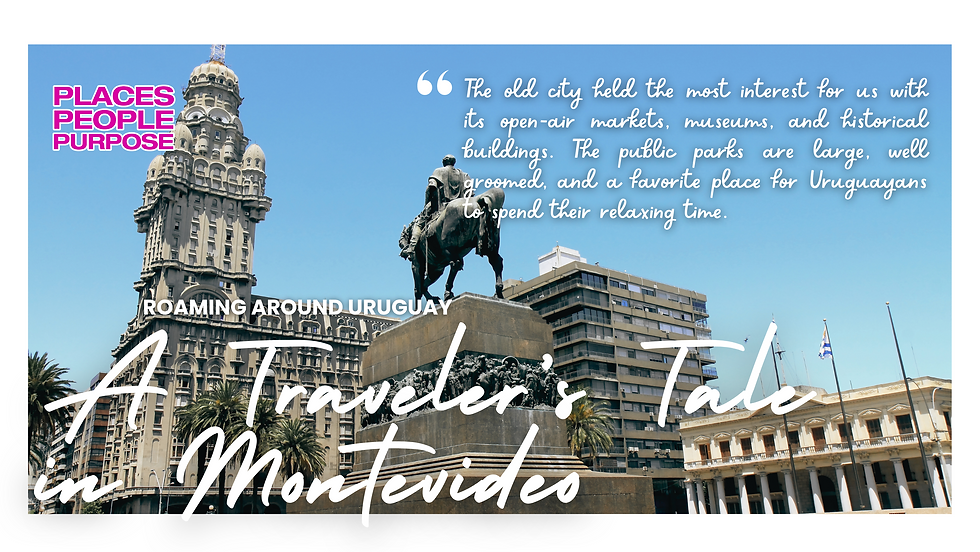Our Barcelona Diaries
- Barbara Votava
- Nov 21, 2023
- 3 min read
Updated: Nov 29, 2023
This was my second visit to Barcelona, and I would still like to return because the exploration there doesn’t stop.

Barcelona is number 17 on the list of “most visited cities in the World”. It is recorded to have 9.9 million visitors a year. I want to touch on a few of the reasons that tourists find it so fascinating. I believe that the Antoni Gaudi architecture is the number one attraction in Barcelona. I say that because, from the time you touch down in that city, his art works are the vibe everywhere. Many of the tours have guides totally dedicated to Gaudi.
His art is considered to be one of the great cultural gifts to the city. And rightly so. Year-round, crowds gape at the grand twists of his imagination: the soaring towers of the Sagrada Familia, the huge, awe-inspiring church still under construction, the facade of La Pedrera, and the giant mosaic lizard that guards the Park Guell on the outskirts, to name a few. To Barcelonians, Gaudi’s Sagrada Familia has become its symbol, nearly as much as the Eiffel Tower in Paris.
Gaudi was complicated and obsessed with nature and geometry. During this visit, I was able to visit the Casa Batllo, which was completed in 1906 and is the work of a mature Gaudi. It was a reconstruction of an apartment building on a block that already had works by Domenech and Puig, all architectural modernists. Initially, this house was due to be demolished and rebuilt anew.
Gaudi instead talked the family into the remodel. He incorporated his love of nature and animals into every facet of the project. The windows are in the shape of tortoise shells. The walls are painted with gold leaf and appear to be the hides of animals. Gill-like openings are an amazingly modern notion of ventilation throughout. His love of light is visited in the central atrium of the house, which has six floors. We were able to see the four floors of the family’s living area, all staged for that period of time. I was particularly amazed at the full patio off the main living room with wide door openings that were a precursor to the kinds of doors we have today. Because stairs are difficult for me, we were able to use the elevators, one of which was the 1906 original remodel. What an exciting experience!
One of our Barcelona meals was at the restaurant Mirabe, high above the city, from which we could see the beaches and the whole city landscape. You need reservations there. For other meals, we found a couple of really nice (and active) tapa bars and tried as many new things as we dared. Fresh seafood is primary there. As I have mentioned before, the Spanish like to celebrate, especially when it comes to sharing food and drink. Be aware; an ensalada rusa in Spanish is potato salad!

Of course, we advertised our podcasts and videos on PlacesPeoplePurpose.com by wearing our T-shirts and handing out our business cards, and we found great reception and interest. It was a fun conversation starter.
Late September and early October proved to be fantastic times to be there. There were still crowds, but they were very manageable, and the weather was perfect.
We loved strolling the many walking streets. While we were there, there was a political protest with many Spaniards walking the streets together, wearing or waving their “Spanish” coat of Arms. It appears that it was a protest against the government of the Catalan province. The pro-Spain residents of Barcelona and the Catalonia Province believe there is bias against them politically and economically. Maybe so. Since the early 2000s, many native Catalans have believed they should be able to secede from Spain, feeling that historically they were an independent country.

Our visits have taught me many things, but mostly I am impressed by the fact that all countries have their own problems. Still, freedom reigns. Hallelujah!

































Comments